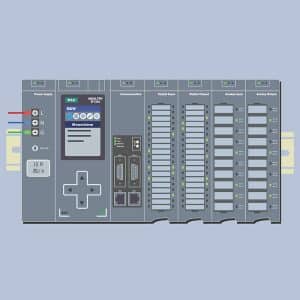When working on an application requiring PLC and HMI, you face an array of choices. Traditionally, controllers and interfaces were separate entities, but advancements in processing power and cost reductions have made integrated PLC/HMI solutions more viable. Integrated units typically consist of: HMI, PLC, and I/O. Proponents of integrated PLC/HMI solutions argue that these setups are convenient, facilitating quicker implementations with minimal space requirements. The software is simpler, eliminating the need for separate programming for the HMI and PLC, thus reducing the learning curve for operators and engineers maintaining the system.
However, there are downsides. Integrated solutions offer a limited selection, hindering customization and isolating system functionalities. Utilizing advanced features tailored to specific applications becomes challenging, as vendors often provide one-size-fits-all solutions. For example, some applications may require a smaller HMI with lower processing power. In such cases, unnecessary higher costs may be incurred. Additionally, there’s an ongoing debate about delegating PLCs for tasks like calling a database, diverting them from their primary purpose of ensuring effective, time-sensitive control.
Despite criticisms, integrated solutions have received praise from industries with discrete applications in process environments. These solutions also cut costs by eliminating labor expenses associated with mounting numerous components. Installation of a single system is faster compared to a larger, frequently extended one





























































